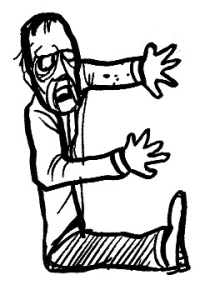Jane Hart, at the Center For Learning & Performance Technologies (@C4LPT), is a leading contributor to our industry (used in the broadest sense). One of the many contributions she makes is to compile a yearly list of “Top 100 Learning Tools.” She compiles this list by aggregating contributors’ Top 10 lists, which can be submitted in a number of ways including her online form.
She also invites folks to make it transparent by blogging or tweeting them. This is the first year I have chosen to do it this way, in the spirit of transparency and #WOL (Working Out Loud/Show Your Work).
I encourage you to contribute your list by whatever method suits you, and join me recognizing Jane for her ongoing contributions from which we all benefit.
My Top 10 Learning Tools of 2015:
- Twitter: I was far from an early adopter, but now it is hard to imagine maintaining my own learning and professional development without it. I learn via my Twitter feed every day.
- Google Search: I suspect there is not much need for commentary here, other than to say it remains for now the best search for what I look for, and how I wish to find it. That could change in the future.
- Google Docs/Drive/Sites: For everyday collaboration and transparent cooperation, these have become my go-to tools. There is a lot of room for improvement, but their wide acceptance makes them very useful.
- WordPress Blog: I write first and foremost to help clarify my own thinking and combine ideas together to see if they stick that way. But, the benefit of knowing that others read this blog and occasionally respond to it makes it a focused learning activity for me. Others feel the same about their “visible thinking” on their blog.
- Scoop.It: I maintain a scoop.it page on which I clip articles, posts and images, and have built a reasonable following of others I follow there and who follow me. Not as robust a feed as Twitter, but more focused and topical. I have found that for me it works better than other similar tools (paper.li, Pinterest, etc.), especially the feature that allows me to comment on each clip, quoting or summarizing why I thought it “scoop worthy.”
- MS PowerPoint: We love it. We hate it. We use it, time and time again. I use it to create learning graphics, too – such are my poor graphic design skills.
- Evernote: I have had a hot-and-cold relationship with Evernote over the years. I am quick to recommend it as a universal tool for clipping, tagging, note-taking and sharing, but I also go a full month at times without touching it. I will say this: In my periods of high productivity I use Evernote a lot. I’m uncertain of the causal relationship, though.
- YouTube: I find myself drifting to YouTube when I need to see how to do something specific, but also for the general hunt-and-peck drifting to see what I might find. There is so much of… everything! The good, the bad, and the ugly. But when I do find something great, I love that it’s there.
- Adobe Captivate: It is less and less frequent, but when we do need an animation or software capture with narration/annotation, we use Captivate. I’m not prepared to defend it against competitors; it’s simply the one we use now.
- LinkedIn: I spend a lot of time thinking negative thoughts about LinkedIn, but the fact remains that I come across useful and thoughtful posts and links there on a regular basis.
- (10a) eLearning Guild/Learning Solutions Magazine: In terms of my own professional development, the guild remains central to my activities. While I have argued publicly that they drop the “e” (The Learning Guild), the publications, events (DevLearn!), and community remain vibrant and extremely relevant.





